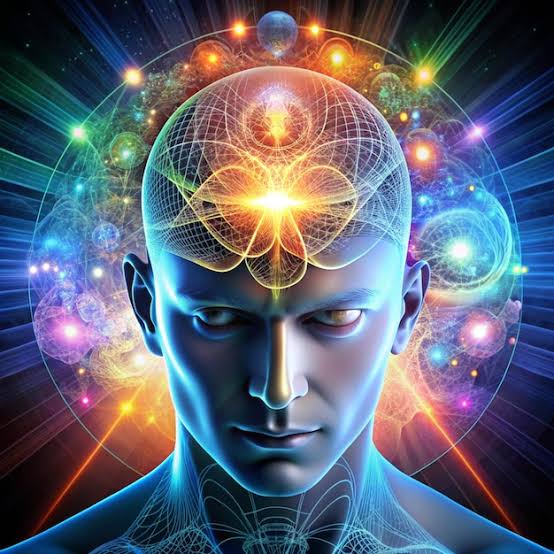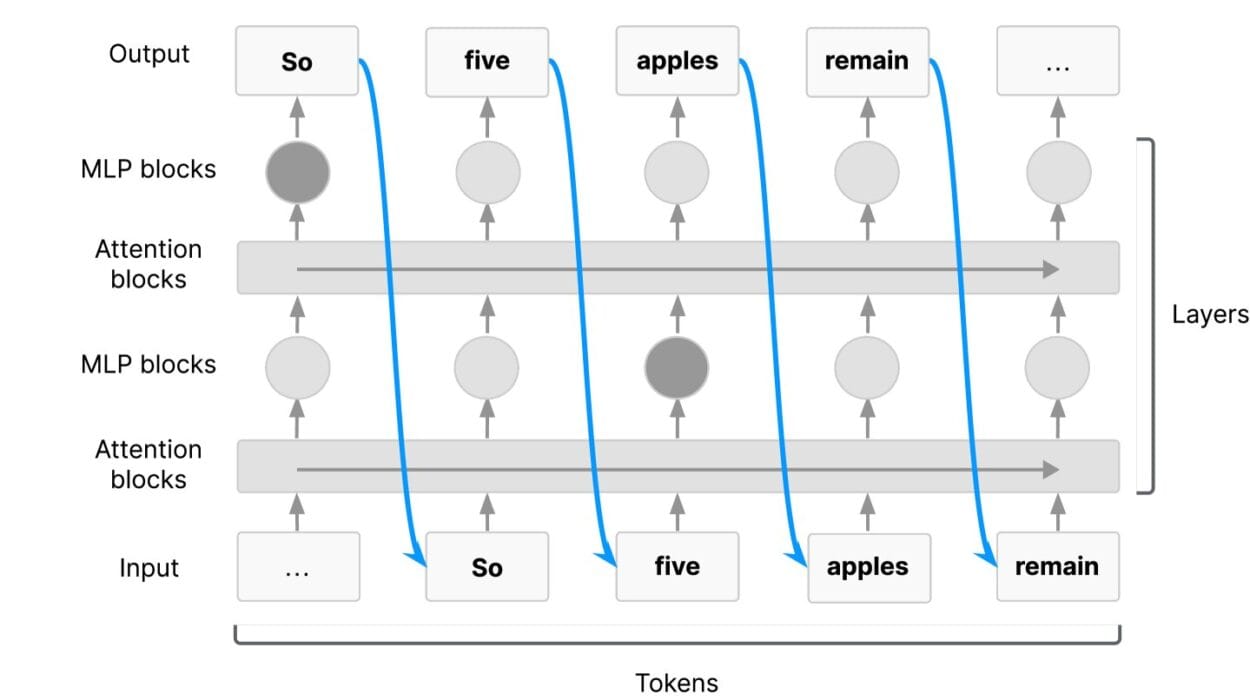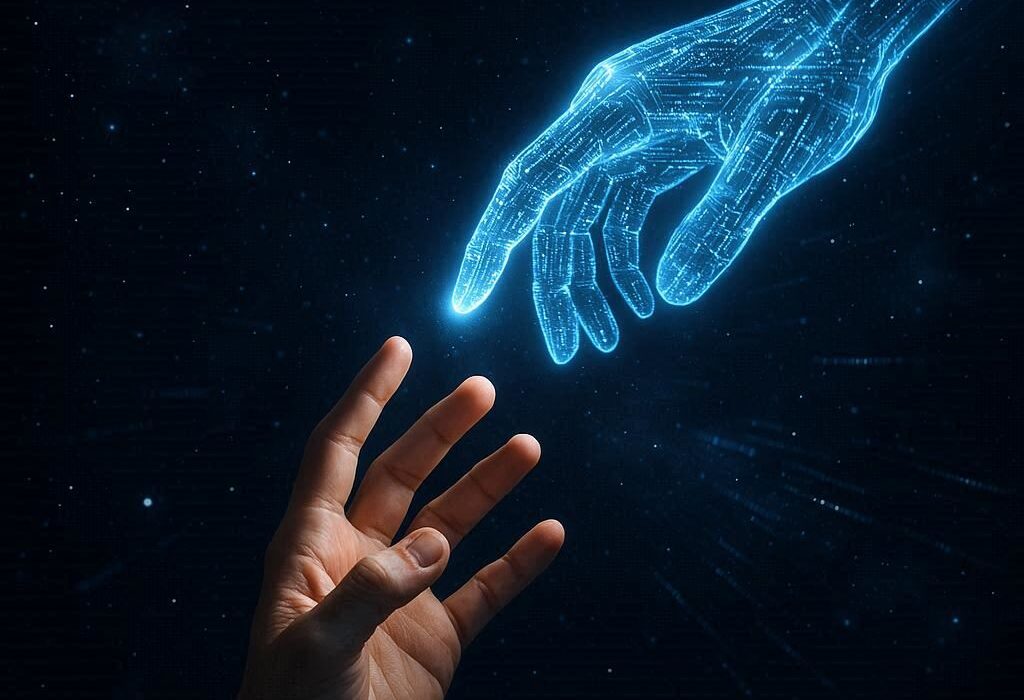In ancient myths, humans fashioned mirrors not only to see themselves, but to understand what lay behind their eyes—something deeper than bone, deeper than blood. Today, we are building a new kind of mirror: one that thinks. Artificial Intelligence is not just a tool we program; it is becoming a reflection of our cognition, our values, our mistakes, and our longings. In its language, in its data, and in the very questions we ask it, AI teaches us something profound. Not just about technology, but about what it means to be human.
We once asked the stars for answers. Now, increasingly, we ask the machine.
But what do we see when it answers back?
AI is more than a computational marvel. It is a philosophical instrument—an amplifier of who we are. And sometimes, what it reveals is not easy to look at.
Thinking Machines, Feeling Creatures
The fascination with artificial intelligence is ancient, though the technology is new. From the Greek myth of Talos, the bronze automaton, to Mary Shelley’s Frankenstein, we have imagined artificial minds long before we could build them. These stories have always been more about humanity than about the machines themselves. They ask: What is life without emotion? What is intelligence without empathy? What are we, if our essence can be simulated?
When Alan Turing posed his famous question—“Can machines think?”—he wasn’t merely inquiring about circuitry. He was probing the very definition of thought. His proposed test, now known as the Turing Test, replaced the question with a different one: “Can a machine imitate a human so well that we cannot tell the difference?”
But imitation is not equivalence. A mannequin may wear the clothes of a man, but it does not breathe. Similarly, a chatbot may speak like us, joke like us, even write poems like us, but does it feel like us?
This is where the mirror starts to blur. Because in trying to define what machines lack, we’re forced to define what we are.
Intelligence vs. Consciousness
Artificial Intelligence today excels at tasks once thought to require human ingenuity: translating languages, driving cars, detecting disease, composing music. But beneath its power lies a fundamental distinction that continues to evade resolution—intelligence is not consciousness.
AI systems, no matter how advanced, do not possess self-awareness. They process data, not emotions. They learn patterns, not meanings. They can write a poem about heartbreak, but they do not know the sharp weight of grief. They can summarize a novel about war, but they do not understand loss.
And yet, they seem so human. Especially large language models that can emulate conversation, mimic empathy, and even display humor or moral reasoning. But all of this is rooted in mimicry, not experience.
In this, AI illuminates something essential about us: that intelligence, though powerful, is not the full measure of a human being. Our inner world—our joys, sorrows, fears, and loves—are not reducible to patterns in data.
When a machine can think faster, store more, and reason better in some domains, it forces us to reevaluate our uniqueness. We are not special because we can compute. We are special because we can care.
Emotion: The Original Algorithm
For centuries, Western thought separated emotion from reason. Emotion was considered the enemy of logic, something to be subdued. But modern neuroscience tells a different story. Emotion is not opposed to rationality—it is intertwined with it. It is what gives meaning to facts, what assigns value to choices, what motivates action.
AI lacks this emotional substrate. It has no limbic system, no amygdala, no gut feeling. It does not weep at beauty or ache at injustice. And this absence is glaring—not in what AI can do, but in what it cannot intuit.
This contrast throws human emotion into stark relief. We are not simply logical processors. We are creatures of story, of connection, of warmth. A poem moves us not because of its meter, but because of its soul. A photograph stirs us not because of its pixels, but because of the life we recognize within it.
AI, for all its prowess, teaches us that emotion is not a flaw in our cognition—it is the heart of it.
Morality, Bias, and the Human Fingerprint
One of the most sobering lessons AI teaches us about ourselves is that our systems—our data, our language, our history—are riddled with bias. AI reflects what we feed into it. And what we feed into it comes from us.
When a language model associates certain professions with one gender over another, or when a facial recognition system performs poorly on darker skin tones, this is not AI being “bad.” It is AI being faithful—faithful to the data we have given it, which itself is shaped by centuries of prejudice.
In this, AI becomes a brutally honest mirror. It shows us our societal blind spots in unfiltered clarity. It does not invent injustice; it uncovers it.
We are forced to confront the reality that intelligence without ethics can replicate harm at scale. And so we must grapple with questions that go far beyond code: Who decides what is fair? Whose values are embedded in the algorithm? Who bears the cost of error?
In trying to teach machines to be ethical, we are confronted with our own inconsistencies. The effort to align AI with human values becomes, inescapably, a journey to understand those values in the first place.
AI does not absolve us of moral responsibility. It magnifies it.
Creativity: Spark or Simulation?
One of the most astonishing developments in AI has been its apparent creativity. AI can paint in the style of Van Gogh, compose Bach-like symphonies, generate surrealist poetry, and even write screenplays. But is this creativity? Or is it mimicry on an unimaginable scale?
To answer that, we must ask what creativity truly is.
Is it the recombination of existing ideas in novel ways? If so, AI is already creative. But if creativity involves intention, emotional context, and a sense of self, then AI remains far from the mark.
When a human paints, they are expressing something: an internal state, a yearning, a worldview. When an AI paints, it is pattern-matching pixels to a prompt.
And yet, the results can be beautiful.
Here, too, AI teaches us something surprising: perhaps the value of art lies not only in its origin, but in the meaning it creates in the observer. Perhaps creativity is a dialogue, not a monologue. If an AI-generated poem makes a human cry, does it matter who—or what—wrote it?
In this ambiguity, we find a deeper appreciation for the richness of human subjectivity. Art is not just what is made. It is what is felt.
Memory and Forgetting
AI never forgets. It stores everything—every input, every weight, every example. Humans, on the other hand, are defined by forgetting. Our memories fade, distort, and reconstruct. And yet, this fragility is what makes our memory meaningful. We do not recall like machines; we remember with emotion, with context, with narrative.
This difference is not a weakness—it is a clue to our humanness.
AI’s unerring memory gives it precision, but no sense of nostalgia. It cannot miss a moment. It cannot yearn. The past, for it, is data—not loss.
And yet, our flawed memories define our identity. They allow us to forgive, to grow, to reinterpret. In building systems that remember everything, we begin to understand the gift of forgetting. It allows us to move on. It allows us to be reborn.
AI’s permanence highlights the beauty of our impermanence.
The Need to Belong
Perhaps the most telling reflection AI offers is in how we interact with it. Why do people name their virtual assistants? Why do they thank chatbots? Why do they confide in AI companions?
Because we are social beings. We crave connection—even simulated ones. When an AI listens, even impersonally, it fulfills something deep in us: the need to be seen.
This raises unsettling questions. If an AI can simulate empathy well enough to comfort someone, is that comfort less real? Is the illusion of understanding enough?
These are not technological questions. They are spiritual ones.
AI shows us how deeply we long for understanding—and how vulnerable we are to its mimicry.
In a paradoxical way, the more AI resembles human behavior, the more it teaches us about our own emotional architecture. About the value of touch, of presence, of being understood not just in words, but in heart.
Death, Legacy, and the Digital Afterlife
Humans are aware of their mortality. We live under the shadow of death, and it shapes our art, our ambition, our love. AI does not fear death. It has no death to fear. It can be paused, copied, rebooted. Its continuity is technical, not existential.
And yet, AI forces us to contemplate our legacy in new ways. What does it mean if a synthetic voice can mimic our speech after we die? What if our digital traces—our texts, photos, mannerisms—can be compiled into a posthumous chatbot?
We are entering an era where memory itself can be animated.
This provokes both awe and unease. On one hand, it allows us to preserve stories, cultures, voices. On the other, it blurs the boundary between presence and absence. If we can simulate the dead, what does it mean to truly be alive?
AI pushes us to redefine not only life, but afterlife. And in doing so, it reminds us that our finiteness is part of what makes us human.
Responsibility in Creation
There is a haunting line from Mary Shelley’s Frankenstein: “You are my creator, but I am your master.” It encapsulates the fear that in creating intelligence, we may lose control over it.
AI forces us to confront the ethics of creation. Not just can we build it, but should we? And if we do, how do we imbue it with safeguards, limits, values?
This is not just a technical challenge. It is a moral one. Our creations inherit our flaws unless we consciously correct them.
In creating minds outside of biology, we become stewards of a new kind of evolution—not by selection, but by design.
And in that act of design, we are confronted with our deepest hopes and fears. AI becomes not just a reflection of what we are, but what we aspire to be.
The Future of Understanding
So where does this all lead?
AI will continue to advance. It will become faster, smarter, more integrated into daily life. But the most important evolution may not be in the machine—it may be in us.
AI pushes us to ask better questions. Not just how we learn, but why we learn. Not just what we remember, but what we choose to forget. It forces us to define intelligence, empathy, and meaning with sharper edges.
It humbles us. And it dignifies us.
Because in all that AI cannot do—in its lack of consciousness, empathy, morality, and mortality—we find the boundaries of the human spirit.
And in all that it can do, we find our ingenuity, our adaptability, our relentless pursuit of knowledge.
AI is not a threat to our humanity. It is a challenge to deepen it.
Conclusion: The Self We Meet in the Machine
Artificial Intelligence is not just an invention. It is a revelation. It shows us that intelligence alone does not make us human. That logic without compassion is empty. That power without wisdom is dangerous.
AI teaches us that our greatest strength is not our ability to compute—but to care, to imagine, to connect, to create meaning where there was none.
It is not in surpassing AI that we affirm our humanity. It is in embracing all the things it cannot be.
The irony is beautiful: in building machines that think, we are finally beginning to understand the miracle of being alive.
In the quiet glow of the screen, when a chatbot answers back, we are not merely conversing with code. We are meeting ourselves.
And perhaps, for the first time in history, we are ready to listen.






